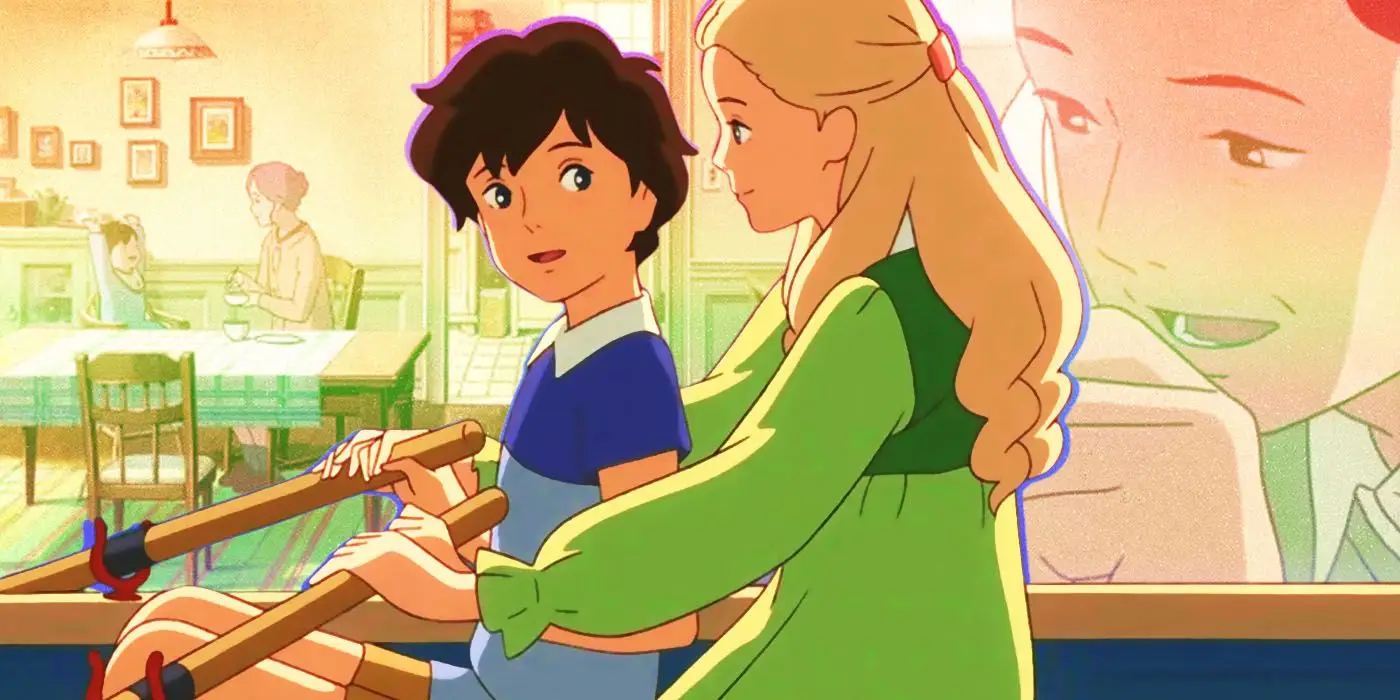“Unraveling the Complex Bond in ‘When Marnie Was There'”
Throughout the catalogue of 21 Studio Ghibli creations over 1986 to 2014, we’ve observed sketchings of manifold emotions, but an openly LGBT+ character isn’t among them. This is no slash on the creative genius inherent in these masterpieces, given that romance has always found itself sidelined in the larger narrative schemes. “When Marnie Was There,” which made its appearance in 2014, appeared initially to break the pattern.
This complex psychological drama featured both nuanced and overt homoerotic tones, sparking conjectures about impending romance between two female protagonists. The unfolding friendship between Anna and Marnie was something of a bridge to self-discovery, a plausible catalyst for the awakening of Anna’s burgeoning sexuality. But that interpretation finds its offshore when Marnie is eventually revealed as Anna’s spectral grandmother. However, despite this, a faction of viewers continues to subtly hint at Anna’s latent homosexuality.
As we intently dissect the relationship between Marnie and Anna, moments tinged with romantic hues sans context are undeniable. Anna, on stumbling upon an ostensibly abandoned mansion, stumbles upon Marnie. The peculiar entity, with strange comings and goings from the house, seemingly ignored by her family, resonates with Anna’s own orphaned existence. The meeting of these kindred spirits gradually blossoms into a profound bond as the film unwinds, propelling Anna on an introspective journey to self-discovery.
The physical proximity they share throughout the movie is hard to ignore. Whether it’s hand-holding, comforting hugs, or the impromptu dances under the vast open skies, Marnie and Anna depict intimacy that, in a heterosexual pairing, would undoubtedly signify romantic interest. These interactions, replete with giggles, coy blushes, whispered secrets, and the omnipresent fear of losing each other point to an intricately layered relationship, subtly eclipsing even some of Studio Ghibli’s official romantic pairings. While romance may not be the intended destination, it serves as a significant milestone on this journey of exploration.
The film’s heterodox journey towards love and acceptance derails from the speculated LGBTQ+ territory when it is unveiled that Marnie is the phantom of Anna’s grandmother. Despite sidelining the queer interpretation, this revelation underscores the unshakeable love Marnie held for her granddaughter, and the longing of Anna for understanding her roots. As somberly apt as this conclusion is, it does land a sucker punch on queer hopes that had been nurtured.
While initially it may appear that Marnie’s motivating intention was to guide Anna towards an understanding of her sexuality, what transpires in actuality is the bridging of gaps with the past, and a journey towards learning to love platonically. While the plot structure ambiguously mirrors a romantic narrative, the focus is strictly upon the universal understanding of love.
Despite the absence of explicit LGBTQ+ themes, it doesn’t undermine the potency of Studio Ghibli’s tapestry to touch upon issues resonating with the queer community. Instances include Ursula from Kiki’s Delivery Service, a character with a frequency that strongly reverberates with the community, or Moro from Princess Mononoke, voiced by celebrated Japanese drag-queen Akihiro Miwa.
The universality of interwoven themes in Studio Ghibli’s narratives transcends the rigidity of sexual preference, allowing vast interpretations. They are tales of the heart, triggering emotional resonances across the viewer spectrum, be it about resilience in adversity, the sweetness of forbidden love, the solace of kinship, or the trials of self-discovery.
“When Marnie Was There” may carry subtle echoes of the LGBTQ+ realm, but essentially it is an emotional saga of platonic affection.
#comics #comicbooks #graphicnovel #graphicnovels #augusttales
Image credit: www.cbr.com


